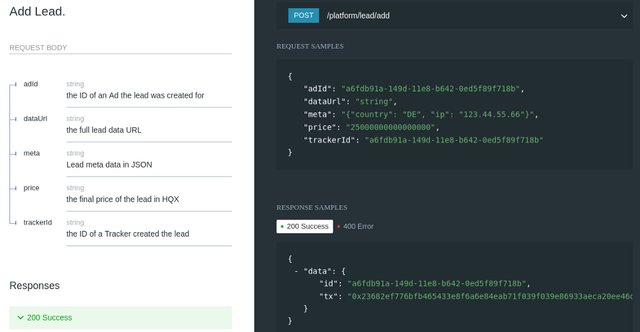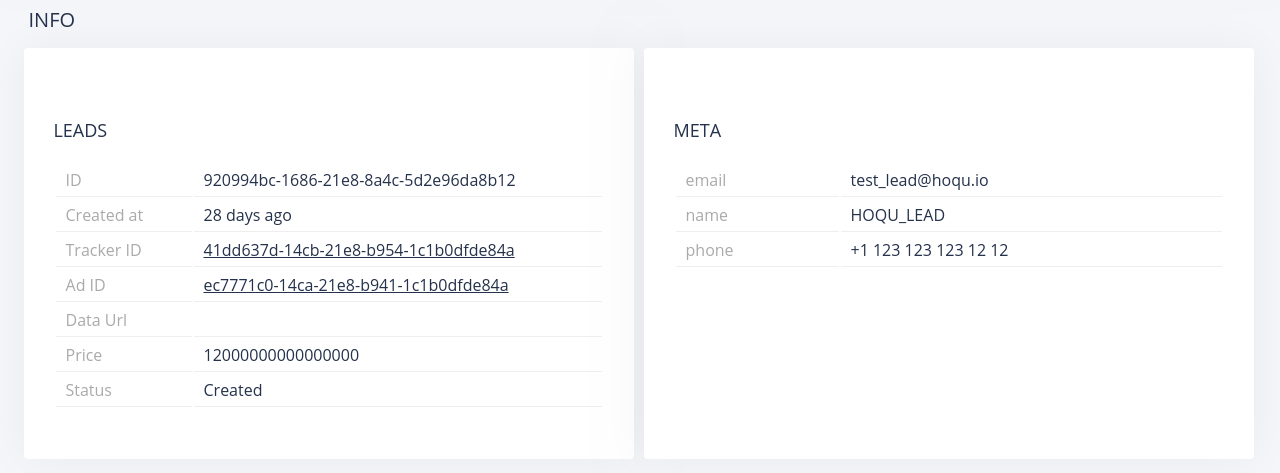HOQU development February digest

During the last month, the HOQU development team has implemented a number of projects and services. We are delighted to introduce the major steps we have achieved in February 2018.
First of all, most of the people who claimed their HQX have already received them. Looking back at the time, when the Ethereum network was literally stuck and we managed to process a maximum of 10 transaction per hour, we have decided that we are making headway. Our engineers have implemented a logic of splitting claim transactions into batches. Each batch can have up to 50 HQX transfer transactions, which gives us the opportunity to send up to 500 transactions an hour even on a very slow Ethereum network. Using this approach, we have sent more than 7000 HQX transactions during the first day of claiming, which was a great result!
The next big changes were introduced on the blockchain API. We have added a new entity, the Ad which allows webmasters to create advertising campaigns on offers. The Ad is linked to a particular offer, the webmaster and his workspace, and all incoming leads are now joined to the Ad. the new version of the API also introduced entity identifiers as UUID rather than integer numbers. To help implement API integration, we have created documentation as well which is available on http://blockchain.hoqu.io/docs .

We understand that checking blockchain data manually is a tedious process, and that is why we have created a new project, the HOQU Blockchain Explorer, which is available on http://blockchain.hoqu.io .
Everyone and anyone can inspect all the data stored in the Ethereum blockchain. Moreover, using our API, anyone can implement their own integration to add HOQU data to the blockchain as well.

When building the HOQU Blockchain Explorer, we chose the microservices architecture as it is the best decision to keep the product agile and scalable. This approach helps us to focus and improve any part of the application separately, thus meeting crucial business requirements. The blockchain API uses the json-rpc protocol for communication with external users and the msgpack-rpc protocol for internal use. Full implementation of json-rpc version 2.0 with batches provides opportunities for parallel requests and makes the application faster and more responsive. To cache blockchain data and keep the application accessories, we have chosen a relational database with master to master replication that gives us high availability and fault tolerance.
The first advertising widget was implemented including a prototype tracking service. Using this widget, users can see that entered data goes to the blockchain and to our smart contract. This widget can be placed on the affiliate website to gather a lead’s data from website visitors. Unfortunately, we cannot give this widget for public use as it is not completed yet, but you could see it in action at our Blockchain conference on February 21.
The example data added by this widget during the conference is available on http://blockchain.hoqu.io/leads/920994bc-1686-21e8-8a4c-5d2e96da8b12 .
The pre-alfa release of the HOQU Affiliate Application was implemented. We wouldn’t like to deploy it for public use yet as some general aspects have to be tuned first. But, we hope we can release the pre-alfa version within the next few weeks. Subscribe to our updates to be up to date with HOQU project development.
We have started building the Affiliate Application, considering that we knew that the project should handle versatile and complex tasks. That is why it is so important to build a proper architecture at the very first stage of development. This fundamental architecture should give a simple and reliable basis to write a code that provides modern approaches for application bundling and deployment. The chosen approach should also meet the requirements of proper testing and be able to handle the cases of the growing team.
Considering of all the above, we have chosen the React + Redux + Saga as a front-end stack of technologies. This should give us the opportunity to write a simple code and have flexible solutions based on the component architecture. Moreover, React has a big ecosystem with ready to use solutions like material-ui, which can drastically improve development processes.
We are constantly improving our applications using modern and reliable approaches. Stay tuned by subscribing to our HOQU blog.